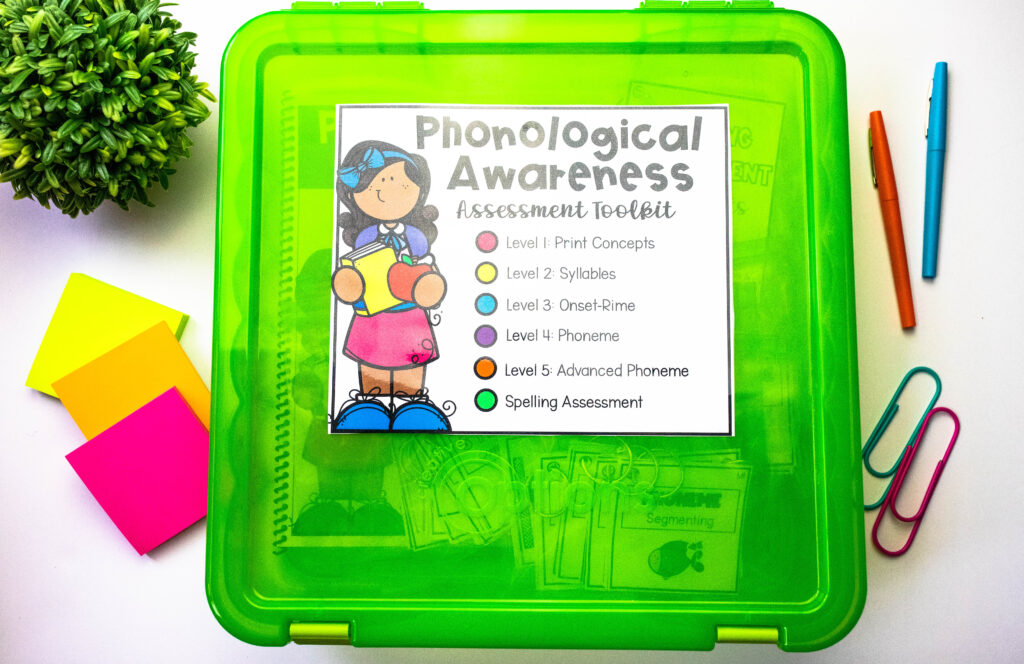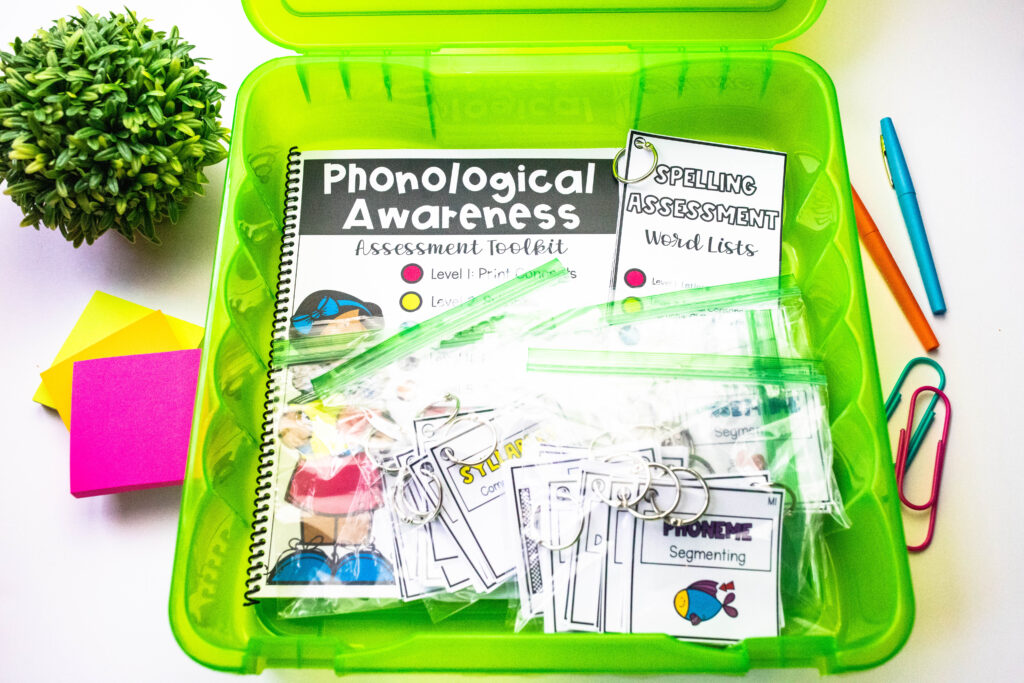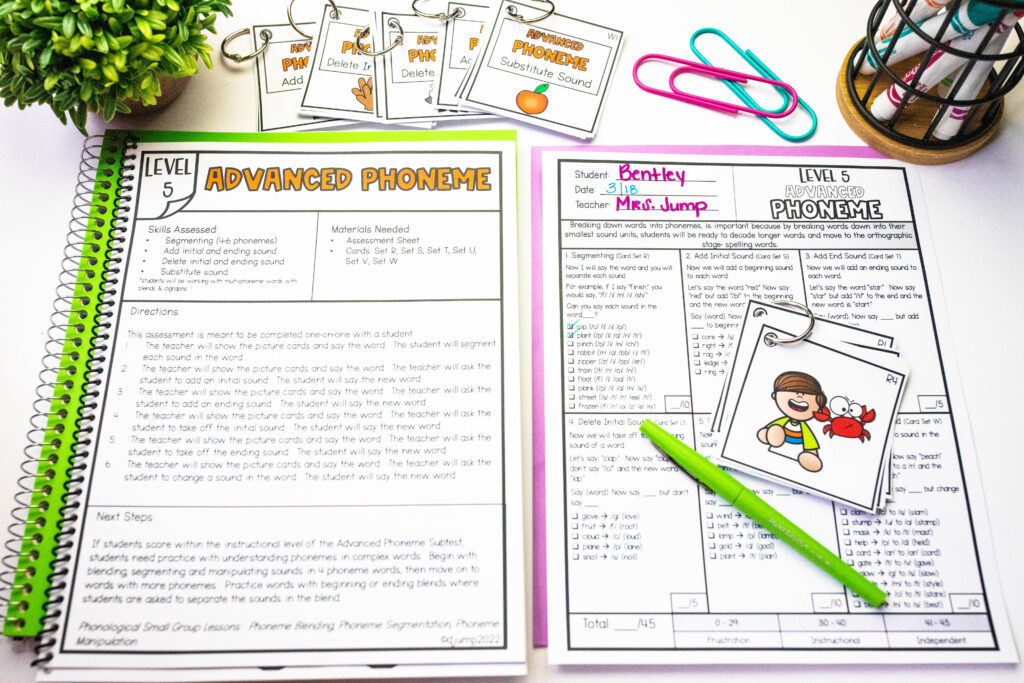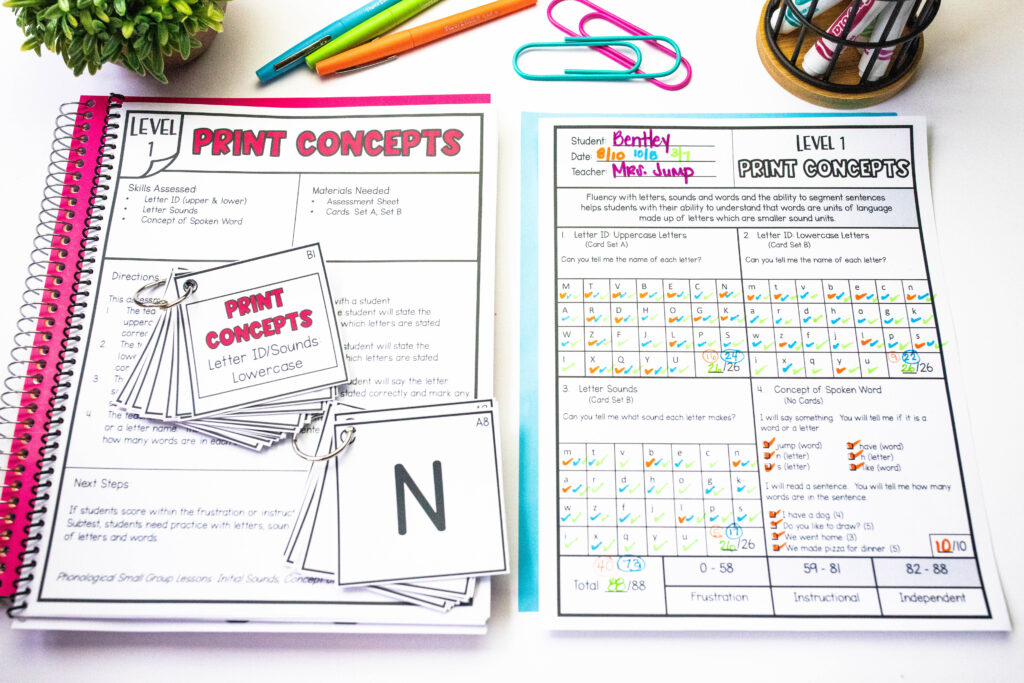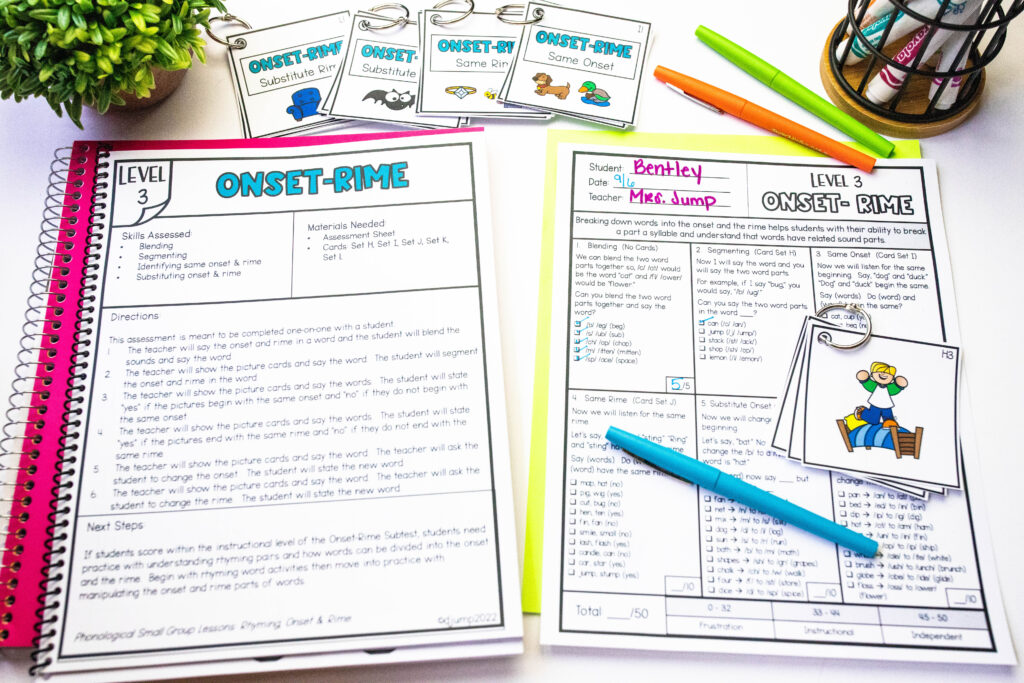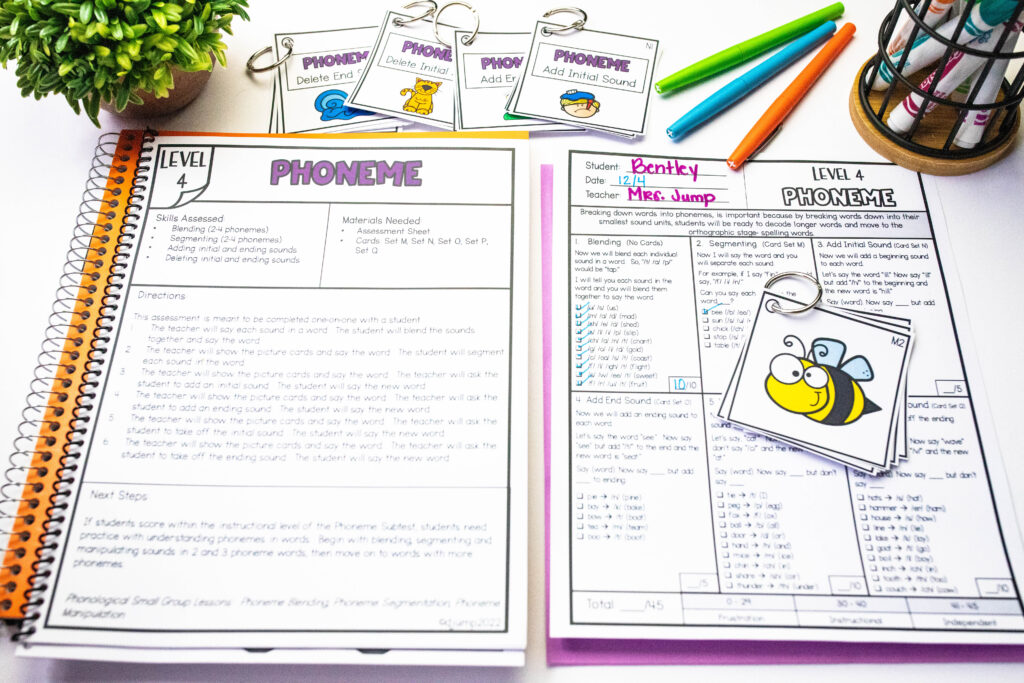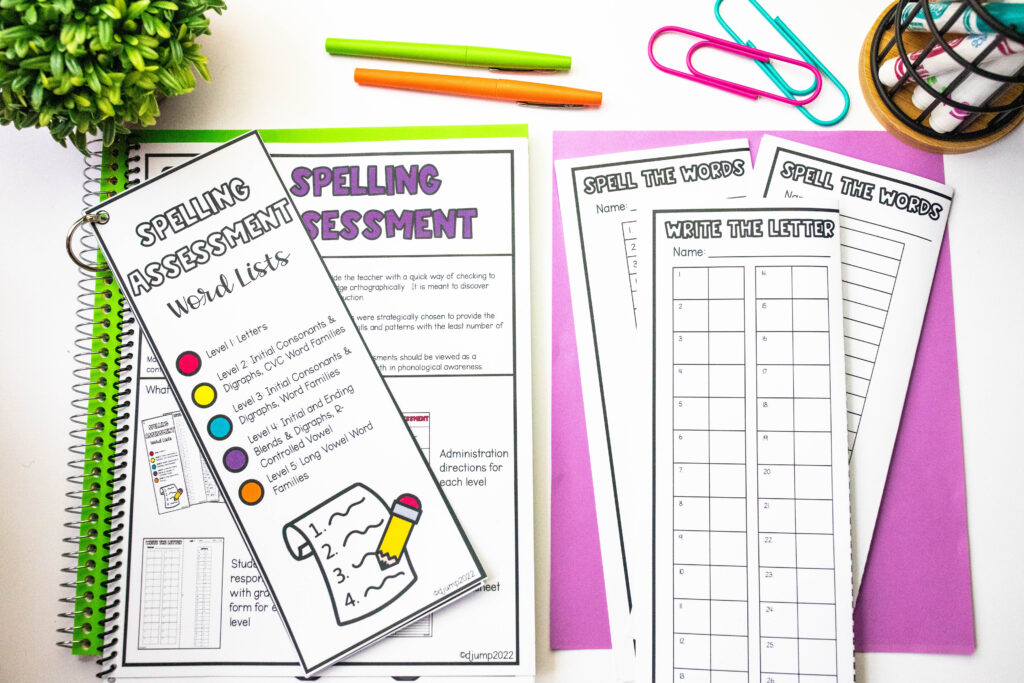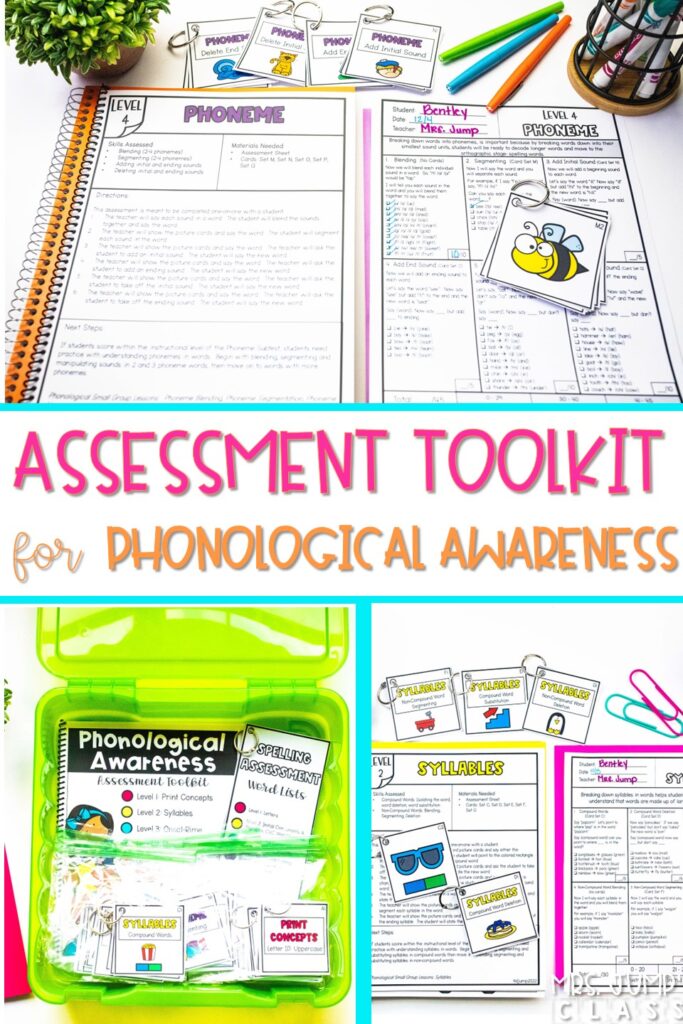Do you get anxiety over knowing how many assessments students need each year? Or, how much data do you need to collect? You are not alone in these concerns! Elementary students have to undergo so many assessments each year to ensure they show academic growth. Thankfully, this year-long process does not have to be miserable for students! Students will be smiling and happy while completing these Phonological Awareness Assessments.
The Importance of Phonological Awareness
Does your heart ache each year when helping struggling readers and writers? I know mine does! Students work so hard to overcome learning struggles, and it is heartbreaking to witness how defeated they become. Thankfully, we are in the position to help encourage and support all students!
When students struggle with reading and writing, it could be due to phonological awareness issues. Luckily, there are strategies to help!
Phonological awareness is the foundation for reading and writing. It includes many skills, such as decoding, blending, and word reading. Additionally, it includes counting syllables, making rhymes, and understanding individual sound in words. I’m sure you can see how essential phonological awareness is for reading and writing since both skills require speech sounds!
Luckily, phonological awareness can develop over time. So, if students struggle, there are ways to help!
Phonological & Phonemic Awareness Assessment Toolkit
Do you see the word “assessment” and instantly want to cringe and run the other way? I get it! However, assessments do not have to be super time-consuming or terrifying for students. They can be fun!
This assessment toolkit aims to assess and guide phonological and phonemic awareness instruction. Teachers will see where students are and what type of instruction will be helpful.
The phonological awareness assessments are easy to administer with picture cards that students love to look at! Thankfully, this makes the oral assessments fun and engaging. Your students will be smiling with you while taking these!
Since data collection is vital for school districts, there are collection sheets provided for each area of phonological awareness. You won’t have to stress about data collection with this all-in-one toolkit.
Toolkit Components
Since there are many components of phonological awareness assessments, there are multiple skills included. They even increase with the level of difficulty.
Print Concepts:
There are four assessments. This includes letter identification of uppercase and lowercase letters, letter-sound knowledge, and the concept of the spoken word.
Syllables:
There are six assessments. This includes compound words, compound word deletion, compound word substitution, and blending syllables. Additionally, it has segmenting syllables and syllable deletion.
Onset-Rime:
There are six assessments. This includes blending, segmenting, onset identification, and rime identification. Furthermore, there are assessments for onset substitution and rime substitution.
Phonemic Awareness (Phoneme):
There are six assessments. This includes phoneme blending and segmentation, adding initial and ending sounds, and initial and ending sound deletion.
Phonemic Awareness (Advanced):
There are six assessments. This includes phoneme segmentation, adding initial and ending sounds, initial and ending sound deletion, and sound substitution.
Spelling Phonological Awareness Assessments:
There are five different levels and lists included. Level 1 begins with an alphabet assessment where students write letters representing the alphabet sounds. Level 2 has initial consonants, initial digraphs, and CVC word families. Level 3 has initial consonants and digraphs and word families. Level 4 focuses on initial and ending blends, digraphs, and R-controlled vowels. Lastly, level 5 focuses on long vowel word families and advanced vowel patterns.
The Phonological Awareness Assessments contain so much material to ensure students learn and grow. Since you know your students best, you can start where you believe they are versus from a fixed point. This continuum and guide will support students in their phonological awareness growth!
If you do not want to miss any of the upcoming lessons, join my email list to be notified of all the interactive lessons coming up! By joining the email list, you will also receive freebies for blog exclusive subscribers!


